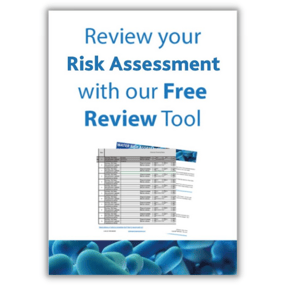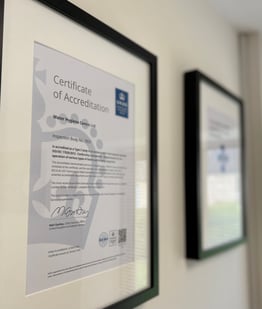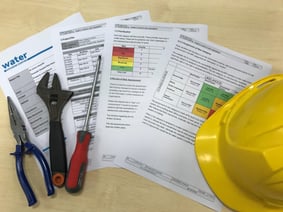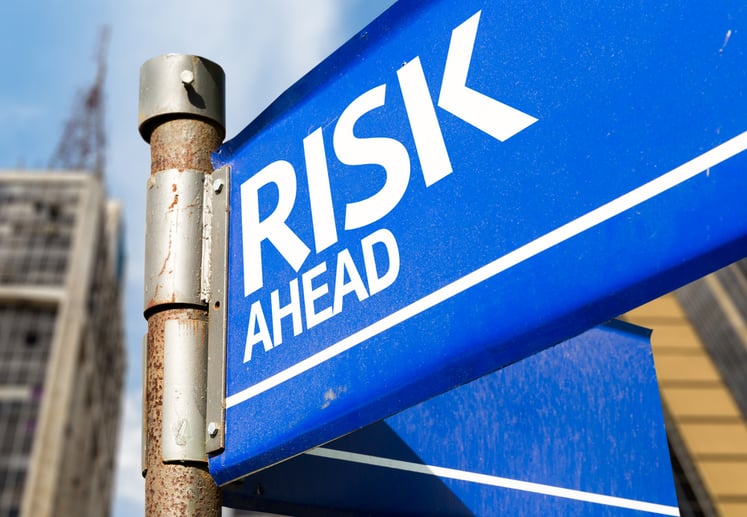In this blog we discuss the ‘Legionella risk assessment’ and whether it is suitable to ensure compliance with regulations and guidance.
What does the guidance say?
HSE guidance states:
“Carrying out a Legionella risk assessment and ensuring it remains up to date is required under health and safety law”
The ACOP L8 [4th Ed.] guidance provides clear criteria that may indicate your Legionella risk assessment no longer remains “up to date” or valid. Whilst a report’s validity can be debated on occasion, unfortunately, we still see instances where organisations fail to adhere to this guidance and find themselves in hot water with the HSE….
A news story highlighted an NHS Trust fined £300,000 for not identifying a change to a water system (one of the six criteria that would trigger a water hygiene risk assessment review). The HSE stressed in their subsequent report, that organisations should “review their risk control measures whenever there is reason to suspect that they are no longer valid or when there are changes to a water system”.
Legionella Risk Assessment - How often should it be reviewed?
 We’ve issued several blogs on Legionella risk assessments, where we’ve raised the “risk of not completing a Legionella Risk Assessment at the right time” and the point that risk assessments need to be reviewed regularly and must be treated as a ‘live’ document.
We’ve issued several blogs on Legionella risk assessments, where we’ve raised the “risk of not completing a Legionella Risk Assessment at the right time” and the point that risk assessments need to be reviewed regularly and must be treated as a ‘live’ document.
To clarify the concept of the ‘right time’, our blog “Risk Assessment - when do I need one?” covers reviewing and documenting assessments. This was supported by the offer to use our longstanding and free ‘risk assessment review tool’ providing an example of how to work out which systems/buildings in your portfolio require a review to be undertaken. The tool uses the HSE’s suggested six change criteria as ‘triggers’ for when a new assessment may be required.
Is a risk assessment “suitable and sufficient”?
 To describe what is meant by “suitable and sufficient”, put simply, the Legionella risk assessment quality should reflect the risk of the system in question. For example, a typical ‘portacabin’ type facility may be classed as a low risk given its limited water systems, very frequent use, and associated water volumes. As such, these risk systems may only require a simple risk assessment resulting in simple control measures. One might also say, ‘You don’t need to use a cannon to kill a mosquito’!!
To describe what is meant by “suitable and sufficient”, put simply, the Legionella risk assessment quality should reflect the risk of the system in question. For example, a typical ‘portacabin’ type facility may be classed as a low risk given its limited water systems, very frequent use, and associated water volumes. As such, these risk systems may only require a simple risk assessment resulting in simple control measures. One might also say, ‘You don’t need to use a cannon to kill a mosquito’!!
Conversely, when a building is bigger, with more complexities associated with inherent domestic water risk systems and the vulnerability of the occupant i.e. Cancer Care building/unit, in this instance a risk assessment that carries a degree of suitability and sufficiency, such as an accredited risk assessment that considers healthcare guidance documents, is going to be very much more desired and applicable.
ACoP L8 , BS8580 and other guidance...
This table considers what may be viewed as “suitable and sufficient” in terms of guidance documents and measures of competency for varying types of buildings…
| Type of Building* | Documents to be Considered | Measure of Competency |
| Domestic House | LCA Membership | |
| School / Public Building / Office | LCA Membership | |
| Care Home |
LCA Membership |
|
| General Healthcare |
LCA Membership |
|
| Immuno-compromised / Augmented Care Areas |
LCA Membership |
* examples of buildings categories only – and not intended to be an exhaustive list!
It is not unreasonable to suggest the water systems serving the most vulnerable people to Legionella bacteria should have a Legionella risk assessment that considers all guidance documents available and be accredited.
HTM04-01 also details that Water Safety Groups need to be satisfied concerning the competency of the individual risk assessor. This can be achieved straightforwardly through interviews.
In the experience of the Water Hygiene Centre, many Legionella risk assessments completed for healthcare buildings have not properly considered HTM04-01, BS 8580-1 or BS 8580-2 (for Pseudomonas aeruginosa and other pathogenic organisms).
Although many claim this and despite referencing the relevant documents, risk assessments are often not “suitable and sufficient” nor do they stand up to scrutiny. Although perhaps this is a broad, even throwaway statement, it is certainly something to bear in mind.
 Care Homes are commonly becoming more and more comparable to a healthcare environment, given the support and level of patient-specific care being offered in these homes. To this end, these homes should be risk-assessed against the requirements of HTM04-01. Again, in the experience of the Water Hygiene Centre if Legionella risk assessments for Care Homes have not considered HTM04-01 is this “suitable and sufficient”?
Care Homes are commonly becoming more and more comparable to a healthcare environment, given the support and level of patient-specific care being offered in these homes. To this end, these homes should be risk-assessed against the requirements of HTM04-01. Again, in the experience of the Water Hygiene Centre if Legionella risk assessments for Care Homes have not considered HTM04-01 is this “suitable and sufficient”?
Is your Legionella risk assessment being used correctly?
The Written Scheme
It is one thing to have a Legionella risk assessment in place, but it is what you do with it that matters. The risk assessment is critical to the preparation of the Water Safety Plan / Written Scheme, which in turn determines the necessary monitoring regimes required to demonstrate these risk systems are operated correctly and in control.
How can an organisation determine a written scheme for one of its buildings without the risk assessment in place to provide the informed status of identified risk systems?
Completing Actions and Remedial Work
The Legionella risk assessment should also be accompanied by a risk minimisation scheme/action plan which outlines any remedial works or management tasks required to reduce risk to as low as reasonably practicable [ALARP].
 These schemes/plans need to have agreed risk prioritisation established between the risk assessor and the organisation that commissioned the risk assessment and will be completing the mitigating works/tasks.
These schemes/plans need to have agreed risk prioritisation established between the risk assessor and the organisation that commissioned the risk assessment and will be completing the mitigating works/tasks.
Failures identified by the Water Hygiene Centre with such risk minimisation schemes/plans include:
- Deadlines set by the Legionella risk assessor with no input from the organisation, resulting in the deadlines being either too lenient or simply unachievable. This leaves the organisations open to scrutiny. Your Legionella risk assessment should only offer prioritised risk recommendations “ideally with an indication of timescales”, but it is up to the organisation to then consider cost and difficulty, updating the minimisation scheme accordingly.
- The schemes/plans lack detail on risk or supporting evidence i.e. photos. These are then supported by the contractor’s price to fix the remedial works. Are these documents nothing more than a quote??
Closure! A sense of achievement! Once the prioritised recommendations are actioned they need to be closed. This should be evidenced, with an auditable trail that can confirm the recommendation has been completed i.e. a photograph, order/job/docket number.
Conclusion
To avoid a Legionella risk assessment ‘landing you in hot water’, it needs to be considered as part of a holistic process and not simply another document to be left in a rarely opened electronic folder.
The commissioning of a suitable and sufficient Legionella risk assessment is just the start of a process, where actions and outputs will lead to the minimisation of risk.
After any management or engineering improvements, the assessment must then be routinely reviewed to establish if any of the suggested HSE change criteria have been ‘triggered’ see our free Legionella Risk Assessment Review Tool.
Some closing thoughts for you….
- Do you have a Legionella risk assessment for all risk systems?
- Is it up to date?
- Is it suitable?
- Has the risk minimisation scheme/action plan been formally accepted by the Water Safety Group?
- Is the risk minimisation scheme/action plan being reviewed by the Water Safety Group and is it on schedule?
- Can you prove that completed recommendations have been actioned?
Further Reading is available: What is a legionella risk assessment, mistakes to avoid, and frequency >
Feel free to reach out if you have any questions about the issues mentioned above or if you would like to consult with one of our experts on water hygiene.
Editors Note: The information provided in this blog is correct at the date of original publication – April 2018 (Revised February 2024).
Image by Ken Boyd from Pixabay









